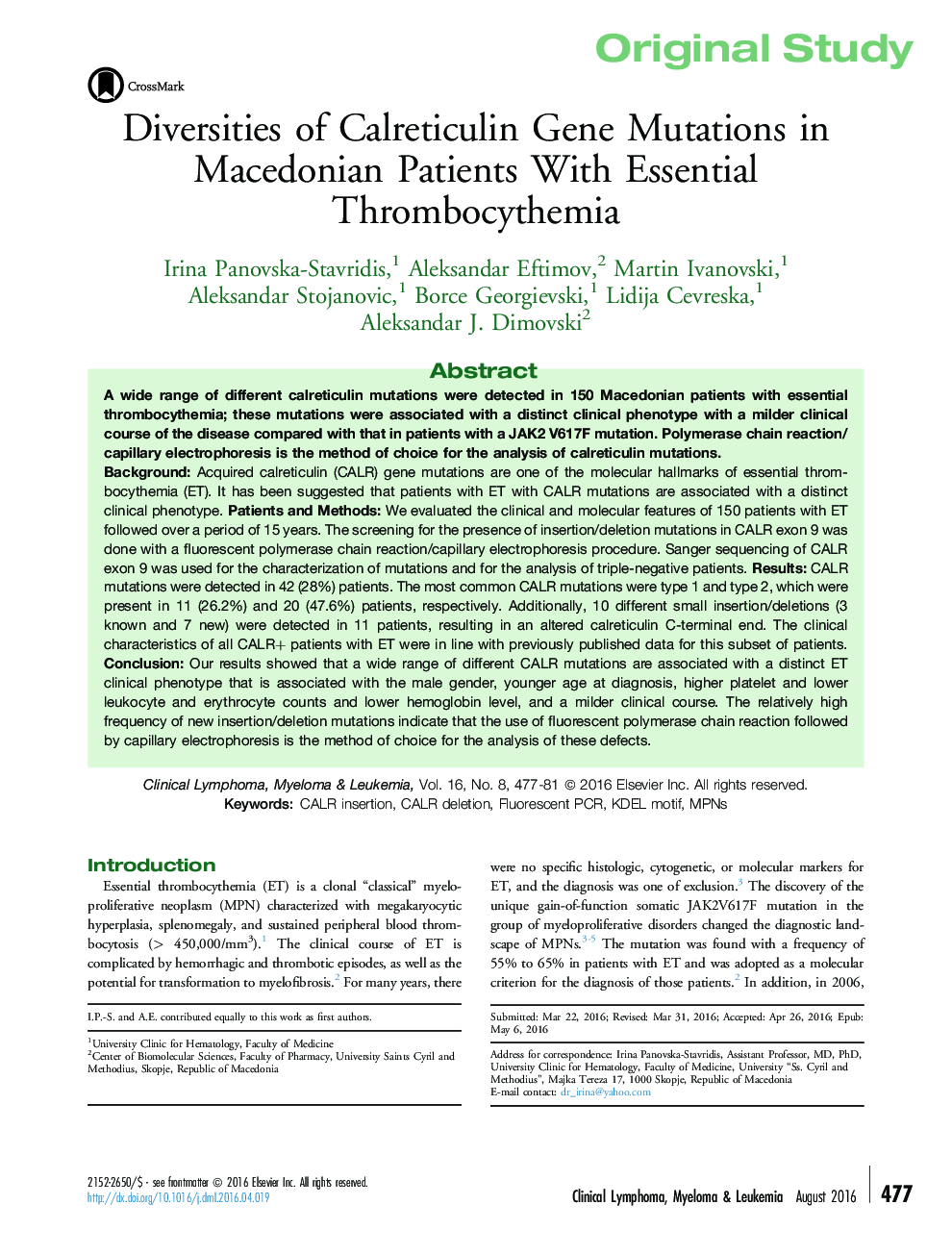| Article ID | Journal | Published Year | Pages | File Type |
|---|---|---|---|---|
| 2754229 | Clinical Lymphoma Myeloma and Leukemia | 2016 | 5 Pages |
BackgroundAcquired calreticulin (CALR) gene mutations are one of the molecular hallmarks of essential thrombocythemia (ET). It has been suggested that patients with ET with CALR mutations are associated with a distinct clinical phenotype.Patients and MethodsWe evaluated the clinical and molecular features of 150 patients with ET followed over a period of 15 years. The screening for the presence of insertion/deletion mutations in CALR exon 9 was done with a fluorescent polymerase chain reaction/capillary electrophoresis procedure. Sanger sequencing of CALR exon 9 was used for the characterization of mutations and for the analysis of triple-negative patients.ResultsCALR mutations were detected in 42 (28%) patients. The most common CALR mutations were type 1 and type 2, which were present in 11 (26.2%) and 20 (47.6%) patients, respectively. Additionally, 10 different small insertion/deletions (3 known and 7 new) were detected in 11 patients, resulting in an altered calreticulin C-terminal end. The clinical characteristics of all CALR+ patients with ET were in line with previously published data for this subset of patients.ConclusionOur results showed that a wide range of different CALR mutations are associated with a distinct ET clinical phenotype that is associated with the male gender, younger age at diagnosis, higher platelet and lower leukocyte and erythrocyte counts and lower hemoglobin level, and a milder clinical course. The relatively high frequency of new insertion/deletion mutations indicate that the use of fluorescent polymerase chain reaction followed by capillary electrophoresis is the method of choice for the analysis of these defects.
